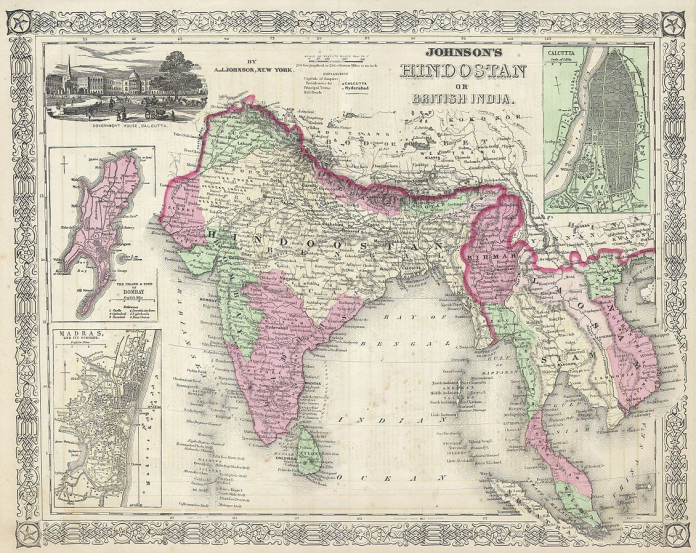William Shakespeare’s line—What’s in a name? A rose will smell as sweet by any other name—begs the question. What if flowers did not smell as sweet in the perfumed garden if their names were changed?
Take the case of the word religion. Why insist on calling Hinduism as Dharma, why not just call it ‘religion’? After all, its doctrines and practices will remain the same in either case. But will they? The meanings of words may overlap without coinciding, and long shadows, rather than light, may creep in through the cracks.
Let us examine some of the consequences which flowed from describing Hinduism as a religion. The word ‘religion’ presupposes a religion that possesses a definable set of beliefs and practices, as is the case with the religions of the West. When it was found that Hinduism did not fit this criterion, it came to be defined as indefinable, leading Wilfred Cantwell Smith to make the startling statement that there are Hindus but there is no Hinduism—in this Western sense. But it did not end there.
In this quest to cast Hinduism in the mould of religion, in order for it to be reduced to a definite set of beliefs and practices, it had to be separated out from Buddhism, Jainism, Sikhism, and the tribal religions. In so doing, it separated those traditions, which earlier may not have felt such a sense of separation. In a pluralist society, they were distinct rather than separate. This pluralism was now displaced by an appeal to secularism, as a way of coexistence, which is the method used by the West to handle differences among religions that are separate.
Because these ‘religions’ of the Indic tradition did not earlier possess a sense of separation, concepts of majority and minority did not enter the picture. But now, as Hinduism constituted the major chunk in this division into separate categories, it came to be considered the majority, thus reducing the others to minorities.
If the religious reality of India came to be perceived in terms of ‘religion’, its social reality came to be conceived in terms of ‘caste’. Just like religion, caste is also not an Indian word. So what happened when the social reality of India was cast as caste? This word covers two dimensions of Hindu social reality—Varna and Jati. Varna refers to the four classes of Brahmanas, Kshatriyas, Vaishyas, and Shudras (with the former untouchables belonging to the last category.) Jatis consisted of endogamous, commensal, and craft-exclusive groups, which number literally thousands. They could also appear and disappear.
In the case of the Varnas, while the hierarchy was considered fixed, people moved from one occupational class to another when changes occurred. This phenomenon has not been adequately recognised.
In the case of Jatis, however, the people remained within the Jatis that they belonged to by birth. Mobility in this case took the form of Jatis changing their occupations. One important difference between the two also pertained to hierarchy. Hierarchy among the Varnas was a stable one; not so among the Jatis. Significantly, the Hindu tradition perceived itself as a tradition characterised by the institution of Varna and not Jati. It is Jati that corresponds most to the Western concept of caste, not Varna.
The British administration injected the concept of race into its understanding of both Varna and Jati. So ‘caste’ became associated with race in a way Varna and Jati had never been. The Indian who saw the implications of this most clearly was Dr B.R. Ambedkar who challenged the association of Varna and Jati with race vigorously and cogently.
Why he did so will go a lot towards explaining why this post it is being written. If caste is based on race, then the differences among them become biological and physical. Such attributes are not susceptible to being changed. So the differences become fixed like those between Blacks and Whites. If, however, the differences are not racial but cultural in nature, then they are susceptible to being changed.
Ambedkar looked forward to the day, as he told Parliament, when the untouchables will disappear when we will no longer hear of untouchables because they will become an indistinguishable part of the Hindu community, the way the Dasyus and the Dasas of the Rig Veda disappeared within the Arya community with the passage of time in ancient India.
One could not entertain such a vision if one believed in ‘caste’. But one could entertain this vision if one was dealing with Varnas and Jatis. It all hinges on the word one used to describe that reality.

This is why it is important to distinguish between the two ideas of India which are in contestation at this moment in India. One of them is sometimes referred to as the ‘idea of India’, and the other as the ‘idea of Bharat’. The idea of India consists of the web of concepts associated with religion, caste, and so on. The idea of Bharat comprises the concepts of Dharma, Varna, Jati, and so on.
So yes, there is a lot in a name. India and Bharat are not just two names for India, they represent two competing visions of the nation which goes by these two names. It is not, it seems, so much a case of ‘India that is Bharat’ anymore. It is rather becoming a case of India or Bharat. – MSN / Firstpost, 23 January 2022
–Prof Arvind Sharma (formerly of the IAS, is the Birks Professor of Comparative Religion at McGill University in Montreal Canada, where he has taught for over thirty years. He has also taught in Australia and the United States and at Nalanda University in India.)
(This article was published on bharatabharati.in on January 29, 2022 and has been reproduced here in full.)

